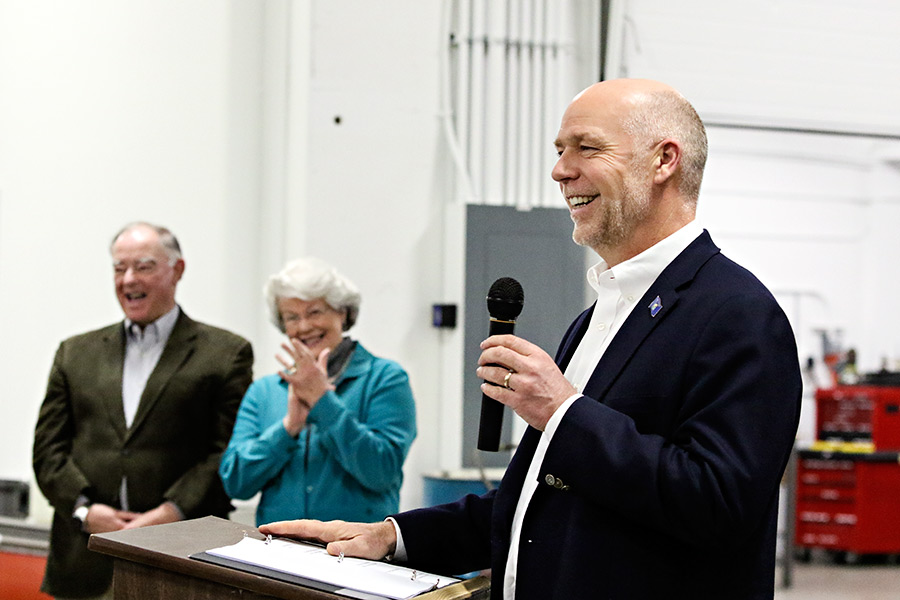Gianforte Releases Tax Proposal with Maximum 6 Percent Rate
Governor candidate said the reduced revenue represents about 2 percent of the state's annual income
By BOBBY CAINA CALVAN, Associated Press
CLANCY — Montana Republican gubernatorial candidate Greg Gianforte is proposing a simplified tax code, phasing out a business equipment tax over four years, freezing state spending and setting the maximum tax rate to 6 percent.
“Why do we need over half a dozen tax rates and needless complexity? And why would we hold on to something like the business equipment tax that chases job creating investments from Montana?” Gianforte said during a news conference at a Clancy lumber yard on the final day for Americans to file state and federal income tax returns.
Gianforte said the reduced revenue represents about 2 percent of the state’s annual income.
“By slowing spending, we can easily afford these reductions,” he said.
Even before the Bozeman Republican released his plan, named after the state’s 406 area code, the re-election campaign for Democratic Gov. Steve Bullock denounced the proposal as benefiting the wealthy at the expense of middle class families.
Amanda Dawsey, an economics professor at the University of Montana who teaches public finance, said Gianforte’s proposals “seem pretty superficial and conveniently aligned with the state’s area code, 406. I see no justification for the particular numbers he’s using.”
Most problematic for Dawsey is Gianforte’s vow to freeze government spending while possibly increasing spending on roads, bridges, sewers and other long-delayed infrastructure projects — while simultaneously reducing state revenue and balancing the budget.
Gianforte said he would flesh out his proposals over the course of the campaign.
Steve Marks, who owns the lumber yard that hosted Gianforte’s new conference, said eliminating the tax would save his company thousands of dollars annually. A giant wood grinder he bought for $540,000 in 2009, has cost him some $30,000 in taxes over the years — money he said he could use for employee bonuses or to help hire more workers. This year, he expects to pay about $9,000 in such taxes.
The equipment levy was last adjusted in 2013, when the rate was reduced from 2 percent to 1.5 percent and the minimum purchases raised from $20,000 to $100,000 before triggering the tax.
But doing away with that tax would eliminate an $81 million source of revenue, according to the state Department of Revenue.
And it could trigger consequences in the budgets of not only the state, but for schools, fire districts and cities across Montana that rely on $66 million of that money, said Ed Caplis, the director of tax policy and research for the Department of Revenue.
If the state lowered the maximum tax rate to 6 percent, the state could lose about $125 million a year. The last time the rate was cut was in 2003, he said, when the top 12 percent rate was slashed to the current 6.9 percent level.